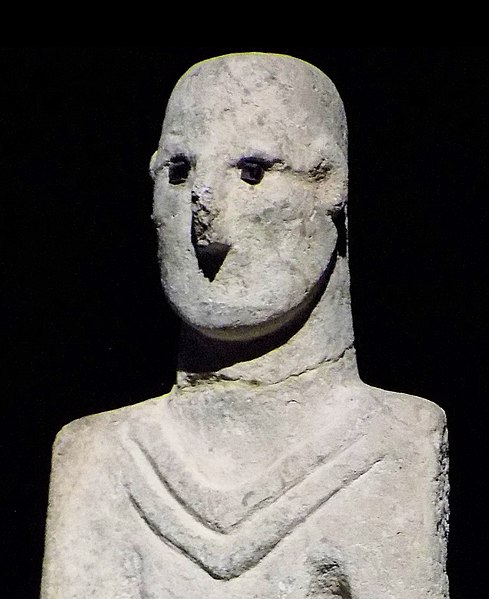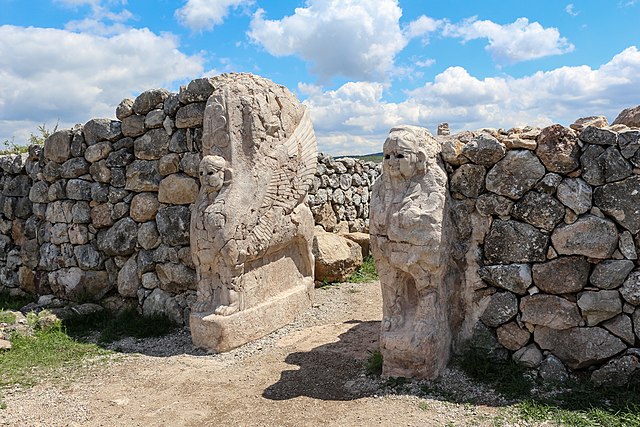The Urfa man, also known as the Balıklıgöl statue, is an ancient human shaped statue found during excavations in Balıklıgöl near Urfa, in the geographical area of Upper Mesopotamia, in the southeast of modern Turkey. It is dated c. 9000 BC to the period of the Pre-Pottery Neolithic, and was considered as "the oldest naturalistic life-sized sculpture of a human". It is considered as contemporaneous with the sites of Göbekli Tepe and Nevalı Çori.
Urfa man, in the Şanlıurfa Museum
Another view of the statue
Urfa man portrait, with obsidian stones in the eye sockets
Urfa man detail
Turkey, officially the Republic of Türkiye, is a country mainly in Anatolia in West Asia, with a smaller part called East Thrace in Southeast Europe. It borders the Black Sea to the north; Georgia, Armenia, Azerbaijan, and Iran to the east; Iraq, Syria, and the Mediterranean Sea to the south; and the Aegean Sea, Greece, and Bulgaria to the west. Turkey is home to over 85 million people; most are ethnic Turks, while ethnic Kurds are the largest ethnic minority. Officially a secular state, Turkey has a Muslim-majority population. Ankara is Turkey's capital and second-largest city; Istanbul is its largest city, and its economic and financial center, as well as the largest city in Europe. Other major cities include İzmir, Bursa and Antalya.
Some henges at Göbekli Tepe were erected as far back as 9600 BC, predating those of Stonehenge by over seven millennia.
The Sphinx Gate of Hattusa, the capital of the Hittites
The Temple of Zeus in the ancient city of Aizanoi in Phrygia
The Sebasteion of Aphrodisias, a city named after Aphrodite, the Greek goddess of beauty. In 2017, it was inscribed on the UNESCO World Heritage Site list.








